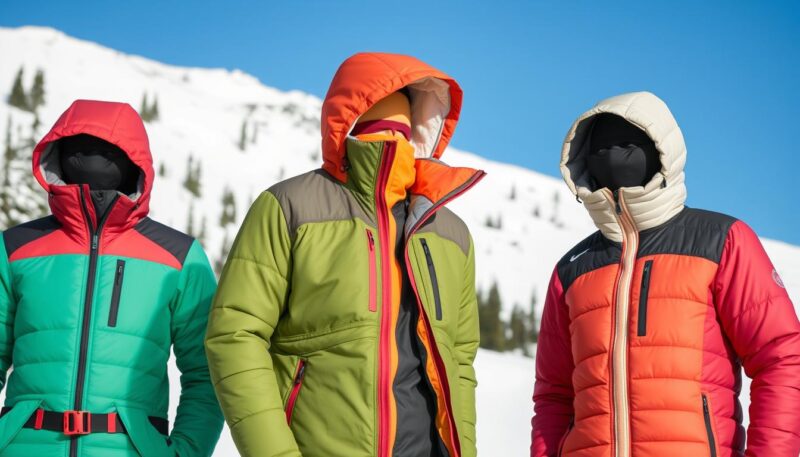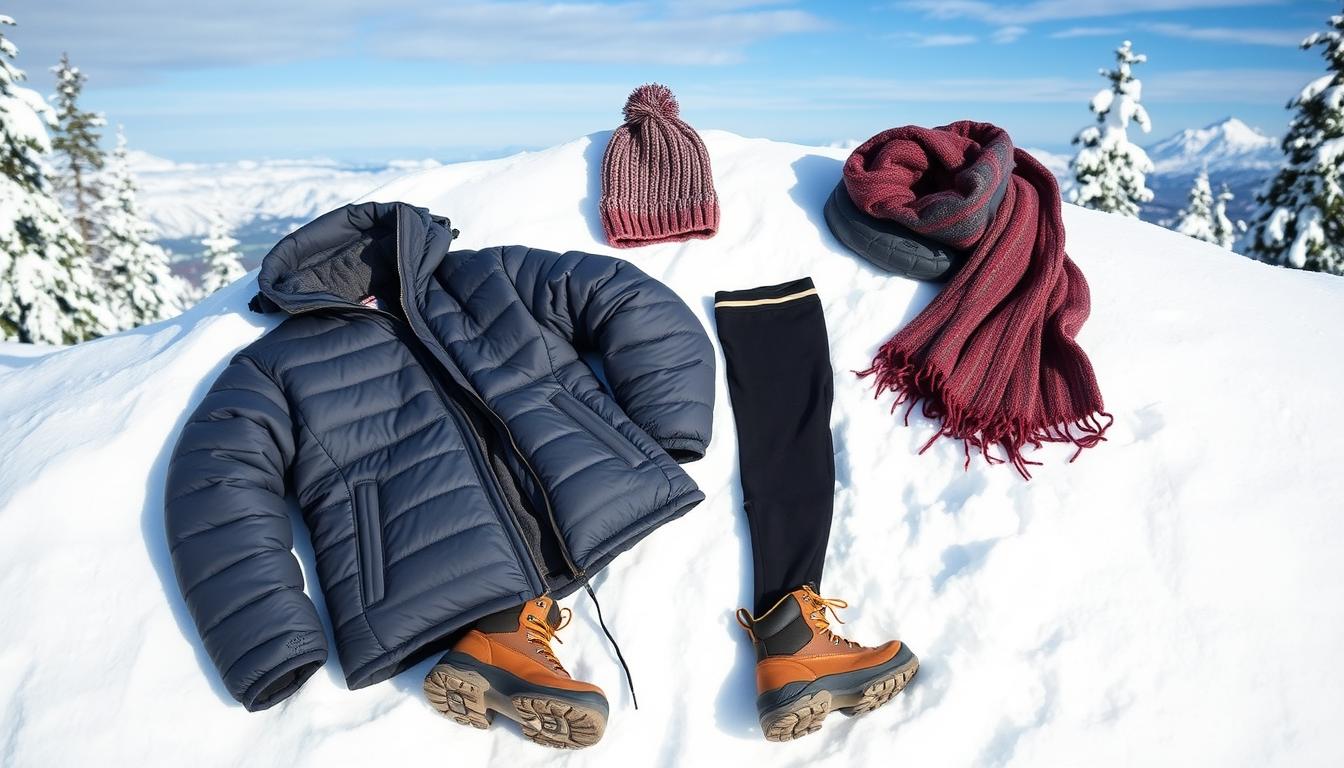Winter hiking presents a unique blend of challenges and thrills. The crisp air, mesmerizing snow-covered landscapes, and the solitude of the less-crowded trails make for an unforgettable outdoor adventure. However, stepping into the winter wilderness without the right clothing can quickly turn an exciting hike into an uncomfortable and potentially hazardous ordeal. This guide will delve into the essential winter hiking clothes that ensure you stay warm and comfortable, allowing you to fully embrace your winter outdoor adventures.
Essential winter hiking clothes are designed to provide a delicate balance between warmth, breathability, and protection against the elements. Using proper layering techniques and high-quality materials like thermal base layers can make all the difference. In this article, you will learn how to properly layer your clothing, manage body temperature, and choose the best gear for your needs. These insights will not only enhance your hiking experience but also keep you safe from the perilous cold.
Having completed all 11 National Scenic Trails, I can attest to the importance of suitable winter hiking attire. I have experienced firsthand the transformative power of effectively layered clothing, especially in the unpredictable winter conditions. Whether you’re a novice or an experienced hiker, understanding the intricacies of winter hiking clothes is crucial.
Key Takeaways
- Proper winter hiking clothes are essential for safety and comfort.
- Layering is critical to regulate body temperature.
- Thermal base layers should wick away moisture while retaining heat.
- Insulating mid-layers can be down or synthetic, depending on conditions.
- Waterproof and windproof outer layers protect against harsh elements.
- Accessories like beanies, gloves, and neck gaiters enhance comfort.
- Popular brands for winter hiking gear include Patagonia, Arc’teryx, and Smartwool.
Read on as we explore the various layers, essential clothing items, and smart strategies to stay warm and dry on your winter outdoor adventures. From thermal base layers to quality hiking boots, we’ve got you covered for your next winter hike.
Layering Basics for Winter Hiking
When it comes to winter hiking, understanding the art of layering is essential for staying warm and comfortable. Layering allows you to adjust clothing based on activity levels and changing weather conditions. This guide provides an in-depth look at why layering is crucial, the types of layers you should consider, and how to manage your body temperature effectively.
Why Layering is Crucial
Layering techniques are vital because they provide the flexibility to control your body temperature. Layers can be added or removed as needed to prevent overheating or feeling too cold. This balance is particularly important during winter hikes where weather and intensity can vary widely. Using moisture-wicking and breathable fabrics in your layers ensures that sweat is managed efficiently, keeping you dry and warm.
Types of Layers
Effective layering techniques generally involve three main types of layers:
- Base Layer: The base layer, often made from moisture-wicking fabrics like merino wool or synthetic fibers, draws sweat away from your skin. Examples include long underwear, hat liners, glove liners, and sock liners.
- Insulating Layer: The insulating layer traps body heat to keep you warm. Popular choices include fleece jackets, puffy jackets (down and synthetic), wool hats, wool socks, and insulated gloves. Both synthetic padded jackets for wet conditions and down jackets for drier climates are recommended.
- Shell Layer: This outermost layer protects you from wind and precipitation. Typical items include rain jackets, rain pants, rain hats, and shell gloves. Look for shells that are waterproof, breathable, and packable with features like armpit vents.
Managing Body Temperature
Effectively managing body temperature during winter hikes involves wearing moisture-wicking base layers and using breathable fabrics in other layers. Here are some tips:
- Add or remove layers based on activity and weather changes.
- Avoid cotton materials as base layers due to their water retention properties.
- Upper Body: Start with midweight base layer shirts and consider budget-friendly alternatives if needed. Insulating layers like fleece sweaters and down jackets are common choices.
- Lower Body: Opt for weatherproof shell pants, warm hiking socks, and waterproof hiking shoes. Midweight merino base layer bottoms and snow pants are also excellent options.
The right blend of materials and layering techniques will ensure even the toughest winter hikes are manageable, keeping you warm, dry, and comfortable.
| Layer Type | Examples | Recommended Fabrics |
|---|---|---|
| Base Layer | Long underwear, sock liners | Merino wool, synthetic fibers |
| Insulating Layer | Fleece jackets, puffy jackets | Synthetic fill, down, wool |
| Shell Layer | Rain jackets, shell gloves | Waterproof, breathable fabrics |
Essential Winter Hiking Clothes
When it comes to winter hiking, choosing the right clothing is crucial for staying warm, dry, and comfortable. A proper layering system, including base layers, insulation layers, and weatherproof outer layers, is key to managing body temperature and protecting against the elements.
Base Layers
Start with base layers made from breathable fabrics like merino wool or synthetic materials. These fabrics are excellent for moisture-wicking and temperature regulation, ensuring you stay dry and warm. Cotton is not recommended because it retains moisture, which can lead to hypothermia. Consider packing an extra set of base layers to change into if you get wet during your hike.
Insulation Layers
Insulation layers such as fleece or down jackets are essential for providing warmth without adding excessive bulk. These layers trap your body heat effectively, keeping you warm in cold temperatures. Look for insulation layers that are versatile and easy to adjust based on your activity level and changing weather conditions.

Weatherproof Outer Layers
Your outer layer should include weatherproof jackets and pants made from breathable fabrics. Materials like Gore-Tex offer excellent waterproofing and breathability, protecting you from rain, snow, and wind. This outer shell is vital for keeping your insulation layers dry and maintaining overall comfort during your hike.
Table:
| Layer | Recommended Material | Purpose |
|---|---|---|
| Base Layer | Merino Wool, Synthetics | Moisture-wicking, Temperature Regulation |
| Insulation Layer | Fleece, Down | Warmth |
| Outer Layer | Gore-Tex, Waterproof Breathable Fabrics | Protection from Elements |
Choosing the Best Winter Hiking Boots
When the winter trails call, having the best winter boots is essential for safety and comfort. These boots should offer waterproofing, insulation, and great traction for navigating slippery surfaces. Selecting the right footwear can make a significant difference in your hiking experience, making it more enjoyable and less challenging.
Features to Look for in Winter Hiking Boots
When choosing winter hiking boots, you should consider the following features:
- Waterproofing: Ensure the boots are made with waterproof materials to keep your feet dry.
- Insulation: Look for insulation of about 200 grams to keep your feet warm in snowy conditions.
- Traction: Superior grip is necessary for icy and snowy terrains, so check the lug depth and sole design.
- Weight: The boots should be robust yet not too heavy. For example, the Meindl Bergell MFS Hiker boots weigh about three and a half pounds per pair, while the Salewa Ortles Light Mid PTX Boot weighs just 20 ounces for a men’s size 9.
- Breathability: Boots rated on a 1-5 scale in breathability can help keep your feet comfortable during long hikes.
Types of Winter Hiking Boots
Winter hiking boots come in various types, each suited for different conditions:
- Insulated Models: Perfect for extreme cold. For instance, the Columbia Expeditionist Shield boots have 200 grams of synthetic insulation, ideal for short hikes of three to five miles.
- Lightweight Boots: Suitable for milder winter hikes. The Salewa Ortles Light Mid PTX Boots come in common men’s sizes 7-13 and women’s sizes 5-11.
Popular Brands and Models
Several brands stand out in the market due to their quality and performance:
- Patagonia: Known for durable and reliable winter gear.
- Smartwool: Popular for their high-quality hiking socks that complement winter boots.
- Outdoor Research: Offers a range of waterproof jackets perfect for winter hiking.
- Meindl: The Bergell MFS Hiker boots are well-loved for their sturdy construction and reliable insulation.
- Salewa: The Ortles Light Mid PTX Boot is a great lightweight option, providing ample support without the extra weight.
- Columbia: The Expeditionist Shield boots are highly favored for snowy conditions, thanks to their synthetic insulation.
Additionally, it’s crucial to pair these boots with quality hiking socks to ensure maximum comfort and warmth on your outdoor adventures. Remember, investing in good gear like winter boots, hiking socks, and waterproof jackets can significantly enhance your winter hiking experience.
Accessories for Winter Hiking Comfort
Accessories play a pivotal role in overall comfort during winter hikes. Each accessory is designed to ensure you’re well-protected against the biting cold and harsh wind. Incorporating thermal gloves, merino wool garments, and windproof pants completes your winter hiking attire, assuring maximum comfort and efficiency on the trails.
Gloves and Mittens
Opting for the right thermal gloves or mittens is vital. These protect your hands from freezing temperatures, maintaining dexterity and warmth even in severe conditions. Features to consider include insulation, waterproofing, and breathability. Popular choices include gloves lined with merino wool, which provides both warmth and moisture-wicking properties, ensuring your hands remain dry and comfortable.
Hats, Beanies, and Headbands
The second essential accessory is headwear. A merino wool hat or beanie can significantly reduce heat loss from your head, providing essential warmth. For those who prefer minimal coverage, headbands offer a viable alternative, keeping your ears protected from the cold without the full bulk of a hat. Here’s a helpful visual representation:

Neck Gaiters and Scarves
Lastly, neck gaiters and scarves are indispensable for safeguarding your face and neck against chilling winds. These accessories serve dual purposes, providing warmth and shielding delicate skin from windburn. When paired with windproof pants, they ensure your winter hiking outfit is both functional and protective, allowing you to tackle even the coldest of hikes with confidence.
| Accessory | Recommendation | Price Range |
|---|---|---|
| Thermal Gloves | Insulated with merino wool | £28 – £55 |
| Merino Wool Beanie | High thermal retention | £20 – £30 |
| Neck Gaiter | Windproof and versatile | Varies |
Winter Hiking Clothes: Must-Have Items for Your Checklist
Embarking on a snow hiking adventure requires the right cold weather gear to ensure your comfort and safety. Here’s a comprehensive checklist of Must-Have Items to keep you warm and well-prepared.
- Thermal Base Layers: Opt for synthetic fabric, merino wool, or polyester blends to wick sweat and maintain warmth. Avoid cotton as it retains moisture and loses insulation.
- Insulation Layers: Fleece, synthetic jackets, or down (keep in mind that down loses warmth when wet) provide essential insulation. For damp conditions, synthetic alternatives are preferable.
- Weatherproof Outerwear: Choose jackets and pants that are waterproof, water-resistant, and breathable, like those made with Gore-Tex. These layers protect you from wind, snow, and rain.
- Footwear: Lightweight hiking boots with ankle support, such as Salomon Outpulse Mid Gore Tex, are recommended. Complement with thick merino wool socks like Darn Tough Micro Crew Cushion to ensure warmth and dryness.
- Accessories: Essential items include a warm hat or beanie, gloves or mittens, a neck gaiter, microspikes for traction on ice, and high gaiters to keep snow out. Don’t forget sunglasses to protect against snow glare.
- Emergency Gear: A Garmin inReach Explorer+ for communication, hand warmers, and an external battery pack are critical for safety and preparedness during your snow hiking trips.
Here’s a detailed breakdown of the essential winter hiking gear:
| Gear Component | Recommendation | Reason |
|---|---|---|
| Base Layers | Synthetic, merino wool, polyester blends | Wicks sweat, retains warmth |
| Insulation Layers | Fleece, synthetic jackets, down | Provides crucial insulation |
| Outerwear | Gore-Tex jackets and pants | Waterproof, windproof, breathable |
| Footwear | Salomon Outpulse Mid Gore Tex | Ankle support, lightweight, waterproof |
| Socks | Darn Tough Micro Crew Cushion | Thick, warm, blister prevention |
| Headwear | Warm hat or beanie | Retains head warmth |
| Gloves | Insulated gloves or mittens | Protects hands from cold |
| Neck Protection | Neck gaiter | Prevents cold air exposure |
| Traction Devices | Microspikes | Prevents slips on ice |
| Emergency Gear | Garmin inReach Explorer+ | Communication, safety |
By compiling these cold weather gear items on your checklist, you ensure a safe, warm, and enjoyable snow hiking experience. Remember, preparation is key to overcoming the elements and fully enjoying the winter wilderness.
Conclusion
Embracing winter hiking requires you to be perceptive and well-equipped. Ensuring you have the right winter hiking clothes and cold weather gear is crucial for a safe, comfortable adventure. By understanding the principles of layering, you’ll be able to manage your body temperature effectively, adapting to various winter conditions. Whether you’re donning merino wool base layers from Smartwool, an insulative fleece from Patagonia, or a durable outer shell by Outdoor Research, your choices should be guided by both function and quality.
The art of layering stands at the heart of every successful winter hike. Base layers, pivotal in wicking moisture, keep you dry, while mid-layers like the Primaloft insulated jackets offer additional warmth without hindering mobility. Outer layers, such as those made from GORE-TEX®, provide that essential barrier against the winter elements, ensuring breathability and protection from wind and moisture.
Equipping yourself with reliable brands and gear sets the stage for memorable winter outdoor adventures. From polyester’s water-repellency and quick-drying features to the indispensable warmth of merino wool, each item you choose plays a pivotal role in your winter hiking regimen. Remember, the right preparation with winter hiking clothes and cold weather gear guarantees that your winter escapades are not just survivable—they are enjoyable and exhilarating. So, gear up, embrace the chill, and let the unique beauty of winter landscapes unfold before you.
FAQ
Why is layering crucial for winter hiking?
Layering is at the heart of staying warm during winter hikes. It allows for flexibility and temperature control as activity levels change, with moisture-wicking base layers, insulation layers to trap body heat, and weatherproof shells to shield against elements.
What types of layers are recommended for winter hiking?
For winter hiking, the three main types of layers are base layers made of moisture-wicking fabrics like merino wool, insulation layers like fleece or down jackets for warmth, and weatherproof outer layers like waterproof jackets to protect against rain, snow, and wind.
How do moisture-wicking and breathable fabrics help in winter hiking?
Moisture-wicking fabrics help keep skin dry by drawing sweat away from the body, essential for staying warm. Breathable fabrics allow moisture to escape, preventing overheating and ensuring comfort during strenuous activities.
What should I look for in winter hiking boots?
Look for key features such as waterproofing to keep feet dry, insulation to retain warmth, and sufficient traction to navigate slippery surfaces. These features ensure safety and comfort in different winter conditions.
Can you recommend some popular brands for winter hiking gear?
Popular brands include Smartwool for merino layers, Patagonia for insulative fleeces, and Outdoor Research for durable outerwear. These brands are known for high-quality winter hiking clothes and gear.
What accessories are essential for winter hiking?
Essential accessories include thermal gloves or mittens for hand protection, merino wool hats or beanies for head warmth, neck gaiters or scarves to shield the face, and windproof pants to protect against cold winds.
How do I manage body temperature during winter hikes?
Manage body temperature by adjusting layers: remove layers before overheating and add them before feeling too cold. This helps maintain an optimal temperature without compromising comfort and safety.
Why is merino wool preferred for winter base layers?
Merino wool is preferred because it has natural moisture-wicking and temperature-regulating properties. It keeps you warm, dry, and comfortable, making it an excellent choice for thermal base layers in cold weather.
What should be on my checklist for winter hiking clothes?
Your checklist should include thermal base layers, insulation layers like fleece or synthetic jackets, windproof pants, waterproof outerwear, insulated winter boots, quality hiking socks, gloves or mittens, a warm hat or beanie, and traction devices for icy terrain.
What types of winter hiking boots are suitable for different conditions?
Insulated models are ideal for extreme cold, while lighter boots work well for milder winter hikes. Ensure your boots match your hiking conditions to provide adequate protection and comfort.
Source Links
- https://www.treelinereview.com/gear-list/what-to-wear-hiking-in-winter
- https://www.freshoffthegrid.com/winter-hiking-gear/
- https://www.erinexploring.com/blog/winter-hiking-clothes-and-gear-guide
- https://bearfoottheory.com/cold-weather-hiking-clothes-winter-layering-basics/
- https://www.andreaference.com/blog/beginners-guide-to-cold-weather-layering
- https://missadventurepants.com/blog/winter-hiking-clothes
- https://adk.org/winter-day-hiking-gear-list/
- https://www.outdoors.org/resources/amc-outdoors/outdoor-resources/winter-hiking-essential-gear-list/
- https://happiestoutdoors.ca/what-to-wear-winter-hiking/
- https://www.backpacker.com/gear/footwear/hiking-boots/best-winter-hiking-boots/
- https://runrepeat.com/guides/best-winter-hiking-boots
- https://www.wandersomewhere.com/posts/winter-hiking-gear
- https://www.the-hungry-hiker.com/2022/12/11/winter-hiking-what-hiking-gear-to-bring-and-what-to-wear/
- https://sectionhiker.com/sectionhiker-gear-guide/recommended-winter-hiking-gear-list/
- https://www.thewanderingqueen.com/winter-hiking-gear-and-clothes/
- https://www.kuhl.com/borninthemountains/all-you-need-to-know-about-winter-hiking-clothing?srsltid=AfmBOoqwY-2HoU3hRmbEC_OgNkGmHRylq7I3759xFbW1_c3ym6LP5lfa
- https://trailmaiden.com/winter-hiking-clothes/

